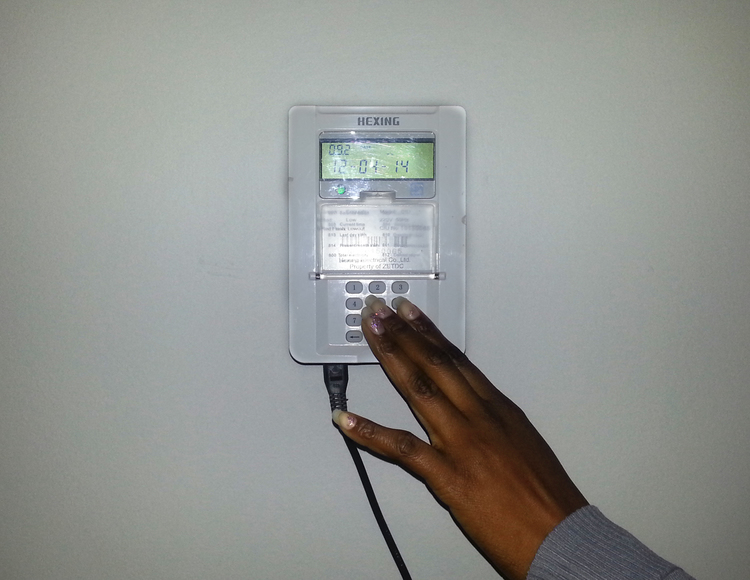
The Sunday Mail

Sunday Mail Reporters
The Zimbabwe Electricity Transmission and Distribution Company (ZETDC) has applied for an increase of electricity tariffs for 2023 by US2 cents/kWh, with the power utility saying the new charges will help to maintain constant power supplies and create capacity to support economic growth.
The electricity tariff of US2 cents/kWh translates to about $147 in local currency.
Currently, Zesa electricity tariffs are at least $137 per/kWh.
ZETDC said the increase will fund projects that include rehabilitation and maintenance of the transmission and distribution network, servicing of the loan for Hwange Units 7 and 8 and refurbishing of Hwange Units 1 to 6.
In a notice seen by this paper, the company said a power tariff increase has become necessary to improve service delivery.
“The Zimbabwe Electricity Transmission and Distribution Company, in compliance with section 53 of the Electricity Act (Chapter 13:19) of 2002, has submitted to the Zimbabwe Energy Regulatory Authority (ZERA), an application for review of electricity tariffs for 2023,” the notice said in part.
“Reasons for seeking electricity tariff review: to enable the utility to raise the revenue required for service provision in 2023, to cover costs for Purchase of Electricity, Operations and Maintenance, Regulatory costs, Research and development costs and General Admin to take into consideration adjustment for under recovery in the previous year.
“To create capacity to be able to support economic growth in the Mining, Agriculture, Industrial and Tourism sectors. The magnitude of the tariff adjustment being applied for in the interim is an increase of USc2/kWh on the existing tariff.”
In addition, ZETDC said internal measures will be taken to improve revenue collection and system losses.
“Internal measures undertaken to improve efficiency, revenue collection and system losses. Completion of prepaid metering programme, installation of smart meters and migration of medium and large power users to prepayment and completion of statistical metering to enable load balancing. . . ,” the notice added.
Other measures will include “automation of manual processes to improve efficiency, network reinforcement and rehabilitation, decommissioning and repurposing of the Small Thermals and conclusion of the construction of transmission lines and substations for purposes of evacuating power (600 MW) from Hwange 7 & 8 projects”.
A snap survey of electricity tariffs charged across the Southern African region shows that ZETDC has one of the region’s lowest charges.
In South Africa, the tariff is US11,2 cents/KWh, while Namibia charges US16 cents/KWh.
Mozambique’s tariff is US12,4 cents/kWh, with Madagascar setting the tariff at US15,3 cents/kWh. In Mauritius, it is US14 cents/kWh, while it is US12,6 cents/kWh in Malawi.
In Eswatini, it is US14 cents/kWh, while it is US11 cents/kWh in Botswana, US7,4 cents/kWh in Zambia, US10,54 cents/kWh in Tanzania and Seychelles charges US27 cents/kWh.
Zimbabweans have, in the past few months, enjoyed constant power provisions following the commissioning of two generators at Hwange Power Station, adding 600MW to the electricity grid. The improved power generation brought delight to both domestic and commercial users.
The past few weeks have, however, seen the return of load shedding. The daily production figures released on the Zimbabwe Power Company platforms showed reduced generation at Hwange Power Station. It is understood that the utility’s subsidiary ZETDC was switched off due to failure to pay the debt of the cost of purchasing electricity.
Hwange units 7 and 8 were built under a foreign currency-based contract and private sector investment, with foreign funds used to invest in the expansion project.
ZETDC is believed to be buying electricity at a tariff of US12 cents/kWh and, in turn, selling to the consumer at an average tariff of US10 cents/kWh, which falls short of the cost of production.
Sources say ZETDC has accumulated a debt of over US$60 million from the new Hwange units 7 and 8, posing a threat to the power supply situation in the country.
Recent ZPC power statistics show a reduction in generation at Kariba Power Station from 800MW to 475MW, which is attributed to low dam levels, a situation that will subsist from this month until after the rainy season in April next year.
While a short-term measure to address this power crisis would be to import power from neighbouring countries, recently, Mozambique discontinued the electricity supply of 200MW to Zimbabwe due to the failure by ZESA to service the contract.
Zambia Power utility ZESCO also discontinued the supply of 100MW to Zimbabwe because the contract was not performing well.
Analysts contend this power crisis calls for a tariff review in order to capacitate the utility to unlock imports and also be able to purchase power locally to cover the demand and supply gap.



